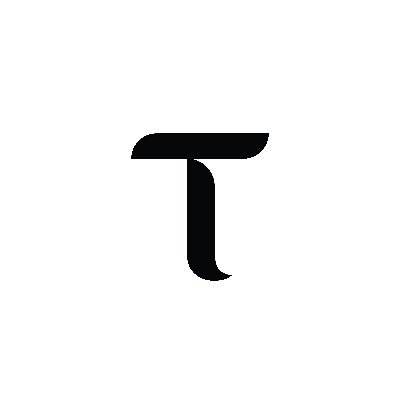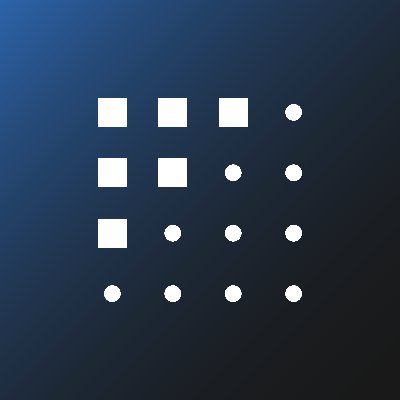What is the market space for AI+Crypto? 4 representative projects inspire user imagination
Author: Vanguard 0
In this era of innovation, AI and cryptocurrency, as disruptive technologies, are each driving the transformation of traditional systems and jointly opening up a new world full of possibilities. With continuous technological advancements, the combination of AI and cryptocurrency is changing our understanding of data processing and the operation of intelligent systems, while also bringing multiple advantages and challenges.
Although the application of AI in the cryptocurrency field is still in its early stages, it has already shown great potential in smart ledgers and AI-driven services, from automating tasks and decision-making processes to enhancing the accuracy of data analysis. However, the development of this emerging field also faces challenges such as limited application rates, technical hurdles, and data privacy issues.
In this article, we will delve into several representative AI cryptocurrency projects, such as Render and Bittensor, analyzing how they bring revolutionary changes across different industries and exploring the challenges these projects face and their future development directions.
Render: Creating a Decentralized GPU Network to Feed Computing Resources for AI Model Training
Render is a typical project that combines AI with cryptocurrency technology, centered on creating a decentralized GPU network to provide the necessary computing resources for AI model training. As AI technology continues to evolve, the demand for computing power is also growing. Render aims to meet this demand while promoting further development of AI technology by offering a decentralized solution.
Decentralized Network: Render establishes a decentralized network that allows individuals and organizations to share their GPU resources, thereby supporting AI model training;
Promoting AI Development: The existence of Render not only provides more computing resources for AI model training but also opens up new possibilities for the development of AI technology;
Resource Sharing: In the Render network, the sharing of GPU resources enables more developers to access high-performance computing resources, which is particularly beneficial for small businesses or individual developers.
The Render project demonstrates tremendous potential in the context of the combination of AI and cryptocurrency technology. It not only provides strong support for the development of AI technology but also offers a practical case for the application of decentralized technology. As technology advances and applications deepen, Render may have a more profound impact on the AI field, promoting technological innovation and broader resource sharing.
Bittensor: Breaking the Isolation of Algorithms and Models in the AI Field
Bittensor is a disruptive AI project aimed at promoting the combination and innovation of AI algorithms through a decentralized network. Unlike other networks that only support AI model training, Bittensor provides a platform that allows AI models to generate specific outputs, such as text generation and image creation. This project is described as "AI Lego," allowing different AI algorithms and models to collaborate, learn, and combine, thereby creating more powerful and multifunctional AI applications.

The core idea of Bittensor is to break the isolation of algorithms and models in the AI field. Through its platform, different AI models can work together to achieve functional combinations, similar to Lego blocks. For example, an AI model skilled in image processing can combine with a model proficient in text processing to serve different tasks.
Bittensor utilizes blockchain technology and a mining incentive mechanism to coordinate the collaboration of AI models. It adopts Polkadot's parachain design and has its own token, $TAO, to incentivize participants in the network. In this network, there are different roles such as miners, validators, nominators, and users, all working together to promote the development and application of AI models.
The token economic model of Bittensor is also an important component. The TAO token is issued through a fair launch (without pre-mined tokens), with a total supply of 21 million, featuring a halving cycle similar to Bitcoin. This economic model means that the issuance and distribution of TAO are fairer, without the common reliance on VC rounds or private placements.
Despite the attractive concepts and technical framework of Bittensor, challenges such as the integration of AI models, centralization issues of validation nodes, and the evaluation of model quality need to be overcome. Additionally, while market interest in the AI field is high, the long-term value and stability of TAO as a new type of cryptocurrency still need to be observed.
Fetch.AI: A Decentralized Large Model Combining Blockchain, AI, and IoT Technologies
Fetch.AI is a pioneering project that deeply integrates blockchain and artificial intelligence technologies, aiming to establish a decentralized intelligent economy by combining AI, blockchain, and IoT technologies to provide new economic interaction methods for businesses and consumers. Fetch.AI's application scenarios cover multiple fields, including logistics, supply chain, finance, energy, and healthcare.

The core architecture of Fetch.AI consists of two components: the blockchain-based distributed ledger Fetch.AI main chain, used to record transactions and smart contracts, ensuring transaction security and reliability; and the AI-capable smart contracts Fetch.AI intelligent agents, which can autonomously execute tasks, coordinate resources, and interact with other intelligent agents to achieve automated and intelligent economic interactions.
Fetch.AI's innovation lies in its Autonomous Economic Agent (AEA) architecture, which is a distributed network of intelligent agents that combines AI and blockchain technology to realize intelligent, autonomous, and decentralized economic interactions. AEA agents possess the ability to make independent decisions, collaborate autonomously, and learn independently, representing independent entities that interact freely within the network.
A key feature of Fetch.AI is its collective learning mechanism. This mechanism encourages agents to share data and models through data sharing, model training, model selection, and model integration, thereby enhancing the overall system performance. This principle of collective learning enables agents within the Fetch.AI network to interact and collaborate more intelligently and efficiently.
Although Fetch.AI's technical architecture is innovative and promising, it faces challenges, including high demands for computing power and data resources, as well as technical complexity. In the future, as technology develops, Fetch.AI may further integrate AI and blockchain technologies to enhance performance and efficiency, expanding more application scenarios.
SingularityNET: Aiming to Solve Any Intellectual Task That Humans Can Perform
SingularityNET is a decentralized AI platform centered on Artificial General Intelligence (AGI), aiming to create a decentralized, democratic, and inclusive AI ecosystem that does not rely on any central entity. It was founded by Dr. Ben Goertzel, an authority in the field of AGI, with the goal of solving any intellectual task that humans can perform. The core technological architecture of SingularityNET includes:
AGIX Token: The token AGIX issued by SingularityNET is used for transaction management and decentralized community governance, supporting the operation of the blockchain network.

AI Marketplace: SingularityNET provides an AI marketplace that currently hosts 75 projects, allowing users to easily find, evaluate, and try out services registered on the platform. Most services offer a limited number of free API calls, making it convenient for users to integrate AI services into their applications.
DeepFunding Mechanism: Through its DeepFunding platform, SingularityNET allows creators to propose projects and obtain funding through community voting, developing a diverse network of AI services. For example, projects such as a universal syntactic parser and risk-aware assessment of AI algorithms have received funding.
Creating a decentralized, democratic, and inclusive AGI ecosystem faces numerous challenges, including technological integration, network governance, and broad participation from users and developers. Nevertheless, the innovations and potential of SingularityNET in the fields of AI and blockchain are worth attention and exploration.
AI + Crypto is the Great Future of Web3, New Surprises Are on the Way
The combination of cutting-edge technologies like AI and blockchain not only brings infinite possibilities and potential use cases but also prompts us to rethink our interactions with technology and how we address traditional problems. However, the current lack of large-scale application of AI cryptocurrency projects indicates that, despite their potential, they are not absolutely necessary at the current level of innovation.
Nonetheless, emerging technologies require time to develop and mature. In the future, as AI technology and cryptocurrency continue to evolve, we can expect to see more innovative use cases that will benefit all stakeholders in the ecosystem. What new wonders and surprises will the combination of AI and cryptocurrency bring to Web3 users? This is a question worth anticipating. Let us wait and witness the future development of this field.














